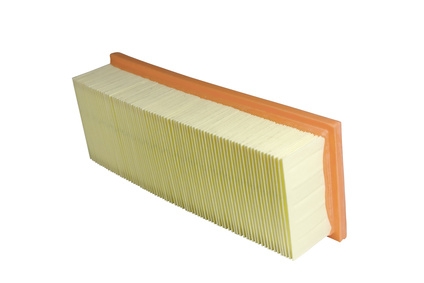
Regular maintenance of your Ford E150 van will allow you increase the life of the vehicle's parts, allow for early identification of problems, maintain a better fuel economy and decrease overall emissions produced. Maintenance schedules can be found in the owner's manual, although many maintenance items that will maintain a high level of performance are not listed. You should consider your driving habits, road conditions (for example, dusty roads require more frequent air filter changes), mileage and time when deciding which E150 components should be addressed during maintenance.
Replace or clean the air filter. Cellulose air filters should be replaced when dirty. Oil-covered cotton filters should be cleaned and re-oiled, according to manufacturer recommendations.
Clean the Mass Air Filter (MAF), if equipped. Remove the air intake tube and locate the MAF sensor inside the tube. Using MAF sensor cleaner, spray the sensor wires thoroughly. Do not touch the wires because they break easily.
Clean the throttle body. Remove the air intake and spray MAF sensor cleaner (or other mild solvent) into the throttle body until metal is visible (remove the blacking). A soft bristled nylon brush and towels may be used to help wipe away solvent. Replace the intake tube, start the vehicle and allow the engine to idle until the solvent is burned away during combustion (the idle will be rough for one to two minutes).
Replace the engine oil and filter. Remove the oil drain plug. Drain the oil. Replace the oil filter. Replace the oil drain plug. Refill with engine oil meeting manufacturer specifications. Use of a detergent motor oil will help clean your internal engine parts.
Replace windshield washer fluid. Depending on the seasonal weather, you may choose to replace the fluid with bug removing fluid, anti-freeze and ice removing fluid, or rain protection fluid (which enhances the water repellent properties of the windshield).
Check all fluids. Check the differential, gearbox and transmission fluids for low levels. Fluid consumption in the differential, gearbox and transmission are not expected. If low levels are encountered, determine if a leak exists and repair it (low levels may also be caused by not enough fluid at the last fill-up).
Use a fuel system cleaner. If you are using a non-detergent gasoline, fuel economy and power robbing deposits and buildup can occur in the fuel system. Detergents in fuel system cleaner can help restore lost power.
Check tire pressure. Tire pressure should be maintained at the maximum cold pressure recommended for best fuel economy and tire wear.
Replace spark plugs (or glow plugs, if you have a diesel model). Replacing plugs will assist in better combustion.
Clean or replace fuel injectors. Cleaning injectors can restore lost power resulting from deposit buildup. Replacing worn fuel injectors can restore lost fuel economy and help prevent lean combustion conditions that will burn out valves or rings.
Rotate the tires. Rotating tires will result in more even tread wear and longer lasting tread.
Flush the radiator fluid. The anti-corrosive properties of radiator fluid degrade with time, even though the cooling properties may not be affected.
Replace the transmission fluid. Transmission fluid in E150 transmissions is stored not only in the drain pan, but throughout the transmission. A full flush is required to replace all transmission fluid (draining the transmission through the pan bolt will only account for a minor portion of the total fluid).
Replace the rear differential fluid and add a friction modifier if the differential is a limited slip.
Wash and wax the vehicle to protect the paint from ultraviolet light exposure, weather damage, tar, sap, bugs and road debris.